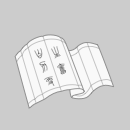
跨界设计
全新正版 极速发货
¥ 31.86 5.5折 ¥ 58 全新
仅1件
送至北京市朝阳区
运费快递 ¥3.00
作者王昀 著
出版社中国电力出版社
ISBN9787512390768
出版时间2016-04
装帧平装
开本16开
定价58元
货号1201286298
上书时间2024-06-14
评价30276好评率 99.94%
- 最新上架
商品详情
- 品相描述:全新
- 商品描述
-
作者简介
王昀,有名建筑师现在为北京大学建筑学研究中心副教授,北京建筑大学建筑设计艺术研究中心职称教授,主要技术经历日本东京大学硕士 博士毕业,聚落研究专家,方体空间主持建筑师北京建筑大学建筑设计艺术研究中心主任设计作品多次参加靠前靠前设计展览,多个研究性的建筑作品被靠前外的建筑杂志报道,主要作品《传统聚落结构中的空间概念》《空间的界限》《一座房子的哲学观》《空间穿越》《空谈空间》《向世界聚落学习》繁体字版《向世界聚落学习》简体字平、精装版《从风景到风景》《空间的潜像》《建筑与音乐》《中国当代建筑师系列——王昀》。
目录
序
导读
从科技结晶体、废物和垃圾中发现与建筑相关的18个未建成案例
1 现代美术馆
2 当代博物馆
3 新世纪传媒中心
4 科技大厦
5 CBD 国际城
6 都会广场
7 大剧院
8 图书馆
9 光宅
10 文化宫
11 大木仓密集城市
12 希望小学
13 大观园规划
14 数学家住宅
15 贸易市场
16 公园住宅
17 摄影家沙龙
18 未来城
作者简介
“废物”观察术
内容摘要
建筑是时代表征物,其身上凝聚有诸多时代的信息和相应时代技术、艺术所赋予的烙印。由于建筑自身在时代发展过程中的相对滞后性,当一种科技的结晶物成为时代特征的瞬间,其实作为科技产品的本身已经是一个落后的产品了,本书将这些似乎已经过时并是以“垃圾”和“废品”的面貌来呈现的物品再次重生,将其作为建筑的摹本,并将一组组全新的建筑的视觉图景加以呈现是本书的立论,也是本书所提示的一种全新的思考与设计方法论。本书适合建筑、艺术、设计相关专业师生和建筑师、学术研究者阅读。
精彩内容
《建筑与废物》这本书中所涉及的一系列我所设计的未建成的作品,是笔者于20世纪90年代中期所开始进行的一系列关于未来建筑思考的展示。起因是伴随我学习外语的小录音机出现了卡带的故障,我试图对其修理的初衷却成为将其变成了废品的行为过程。然而当对这个“废品”进行“解剖”的瞬间,猛然意识到眼前这个“废品”与建筑之间的关联。建筑是时代的产物,建筑反映相应时代判断的本身,表明建筑在进行构思和搭建的过程中眼前已经摆放着时代的“摹本”或“样本”,技术是一个时代的表征,由技术所产生的一系列的结晶体也会瞬间地由于技术的再发展而成为之前技术条件下的废品和垃圾。而所谓建筑反映相应时代的命题也就只能是面对已经完成的结晶体。而不幸的是当你面对这些技术的结晶体时,这些结晶体已经被真正的技术所超越,而建筑所反映的也不过是相应时代的遗弃品。我们这个时代的周边充满了多种结晶体,可这些结晶体对我们来讲还仍然没有企及,或许它们已经成为了时代技术的“垃圾”,但是如同那个曾经给我带来便利的小录音机那样,它也曾经是一个新技术的结晶体。但它在新技术的发展过程下,的确地也已经成为了“废品”和“垃圾”,但是这个“垃圾”却可以转而成为建筑的“摹本”。正是在这样的一种思考的前提下,在我们还在关注着或者不断地将几千年以前的技术的“垃圾”作为我们今天“摹本”的时代,能否让我们关注一下离我们最近的这些“垃圾”所带给我们的新的感受、新的体验和新的视觉是这本书的终极意图,由于每一个过往的结晶体一定曾凝聚过相应时代的尖端技术,从这个意义上说今天的“垃圾”就是明天的传统。
给本书起名叫《建筑与废物》完全是由于一个纠结的过程。“建筑与垃圾”这个名字可能更符合这本书的性格,然而建筑和垃圾的提法引来了诸多的理解上的歧义。而最终采用了现在这本书的命名。我想重申的一点是:我所说的“垃圾”的概念,并不是一个日常生活中所理解的垃圾的意思,是指那些被时代扔掉的并可以从中寻找到视觉含义的“结晶体”要素。在我看来:看似没有用的东西,甚至垃圾,都有可能直接地指向建筑。
序
The book Architecture and Junk touches on a series of unestablished architecture works I designed, which demonstrates a series of contemplation on future architecture I started at the first half of the 1990s. The origin is the action process as I tried in vain to repair a malfunctioning tape recorder that accompanied my foreign language study but only turned it into a damaged junk. But when I was "disassembling" this "junk", I suddenly realized the relation between architecture and this "junk" at hand. Architecture, as product of times, reflects judgment of the respective time itself and indicates that the "prototype" or "sample" of the time is already before one's eyes when designing and constructing the architecture. As technology is the representation of a certain time, a series of crystallized objects resulted from technology will instantaneously turn into junk and rubbish of the previous technology due to further technology development. The statement that architecture reflects respective time is only applicable on crystallized objects already completed. Unfortunately when you are facing such crystallized objects of technology, they are already transcended by real technology, leaving architecture only to reflect derelict of respective time. There are various crystallized objects around us in this age, but they are not within our reach yet, or they have already become "rubbish" of respective technology. However, similar to that small tape recorder that once brought convenience to me, it was once a crystallized object of a new technology then. During the development process of new technology, it indeed became "junk" and "rubbish", yet this "rubbish" can be transformed into "prototype" of architecture. With precondition of such a thinking, while we still pay attention to or keep transforming technology "rubbish" thousands of years ago into our "prototype" today, it is the ultimate intention of this book for us to focus on new feelings, new experience and new vision brought by these "rubbish" most close to us. As each past crystallized object definitely once concentrated cutting-edge technology of respective ages, from this sense, "rubbish" of today is tradition of tomorrow.
To give this book the name of Architecture and Junk is purely due to an entangled procedure. The name of “Architecture and Rubbish” may better comply with the nature of this book, but the wording of architecture and rubbish results in many ambiguous meanings in understanding. Therefore this bookis named as it is now. I want to reiterate that my concept of "rubbish", unlike the rubbish commonly weunderstood in daily life, refers to elements of "crystallized objects" discarded by ages and marked withvisual meanings that can be found from within. In my opinion, those objects seemingly of no use, or evenrubbish, may directly point to architecture.
为你推荐

第73烈士
九品周口
¥80.00

邓小平时代:中国改革开放二十年纪实
八五品郑州
¥60.00

恋词考研英语全真题源报刊识记与应用大全7000词朱伟 有划线和笔记,
九品北京
¥2.00

DVD 雪白 血红 简装两碟未拆封
八五品菏泽
¥22.00

毛泽东选集
九品北京
¥259.00

银河帝国
全新石家庄
¥112.00

印度佛教石窟寺(全四册)巴迦石窟 拜迪萨石窟 卡拉石窟 毗塔卡拉石窟 朱那石窟 纳西克石窟 甘内利石窟 奥兰迦巴德石窟
九五品北京
¥666.00

王国维遗书 全十册 1-10
九品上海
¥810.00

鹿鼎记 全五册
八五品江门
¥350.00

毛泽东军事文选英文精装
九品北京
¥280.00

莎士比亚Shakespeare 全套三册梅菲尔版 罕见翠蓝色尼日尔山羊皮Niger Morocco装帧,特别手工缝制,名社MAURIN出品,注明豪华梅菲尔版,限量发行50套。书况良好,基本没有翻阅过的收藏佳品。 梅菲尔装帧源于英国伦敦,以其高贵典雅和精湛工艺著称。它选用优质皮革和布料,运用烫金等手法,打造出精美封面。注重书籍整体结构同时强调个性化定制。梅菲尔是奢华书籍艺术的代表,深受收藏家喜爱。
九品长春
¥7500.00

毛主席诗词(注释)
八五品北京
¥1888.00

恋词考研英语全真题源报刊识记与应用大全7000词(男生版)朱伟
九五品晋中
¥10.00

日本漫画
全新福州
¥100.00

三体
八五品北京
¥38.00

毛泽东选集繁体竖排
七品苏州
¥150.00

云南统计年鉴2024
九五品大理
¥380.00

龙族Ⅳ:奥丁之渊
八五品南京
¥90.00

《覆元椠古今杂剧三十种》是日本京都帝国大学于1914年(大正三年)从罗振玉处借出原书,请著名刻工陶子麟覆刻而成字黑透红品相佳!
九品苏州
¥23000.00

毛泽东选集 全四卷
八五品石家庄
¥1900.00
— 没有更多了 —
微信扫码逛孔网
无需下载














东北的得失,乃天下的第一大事。
全新,物流很快